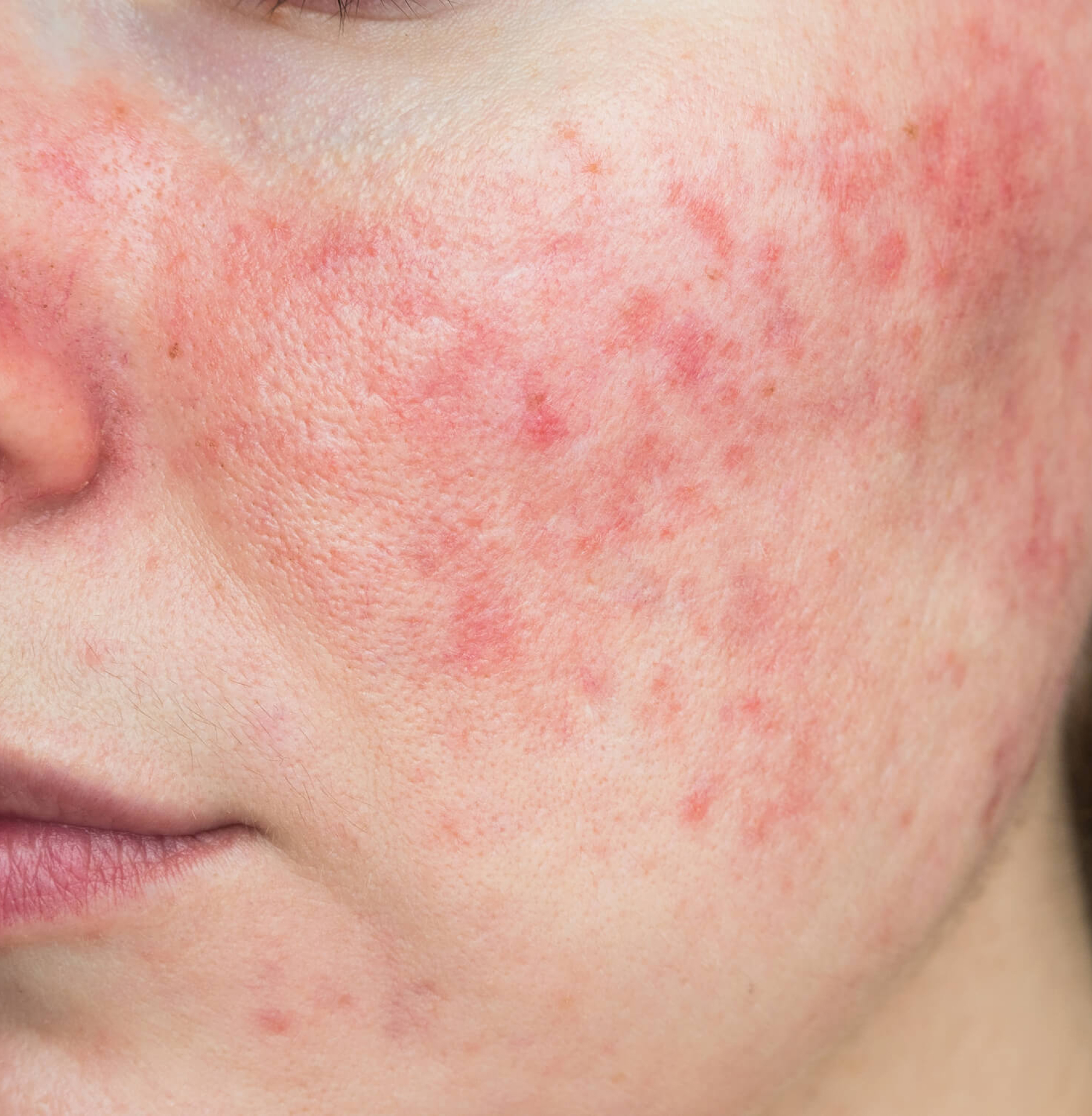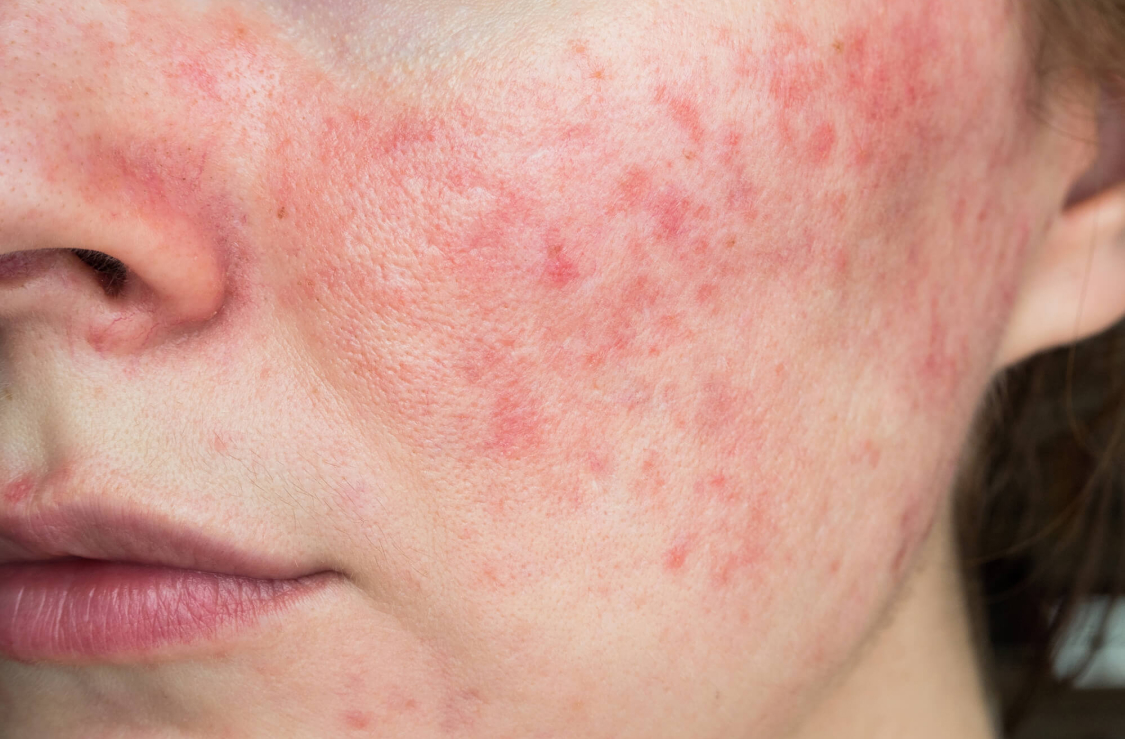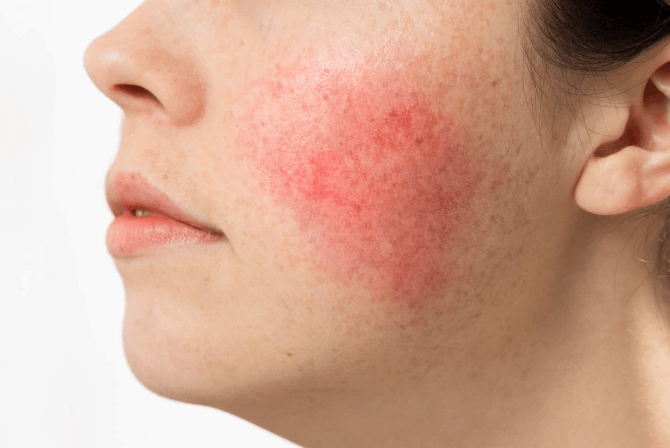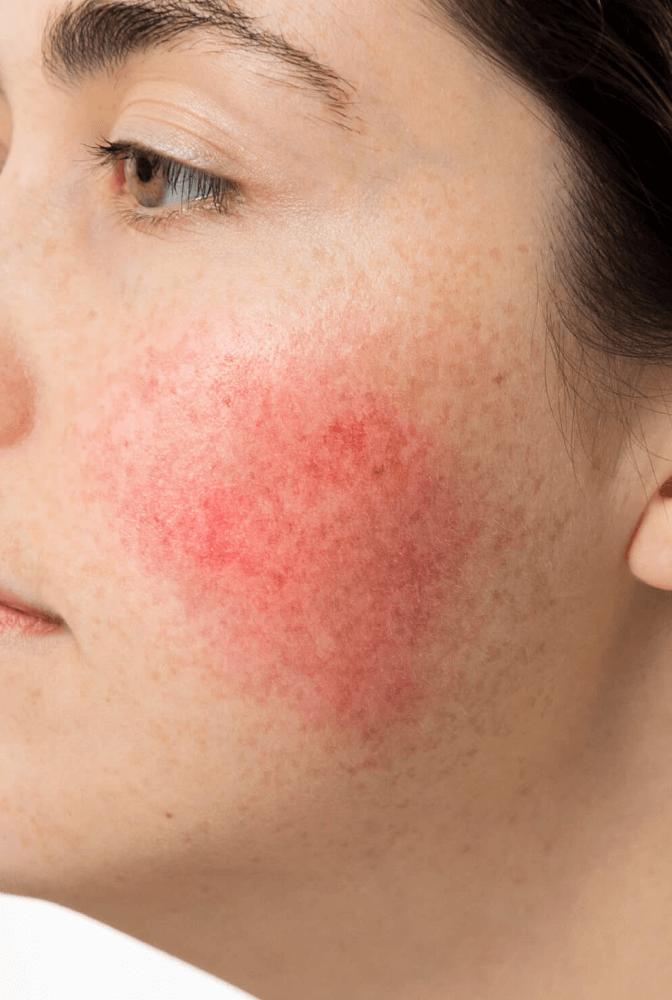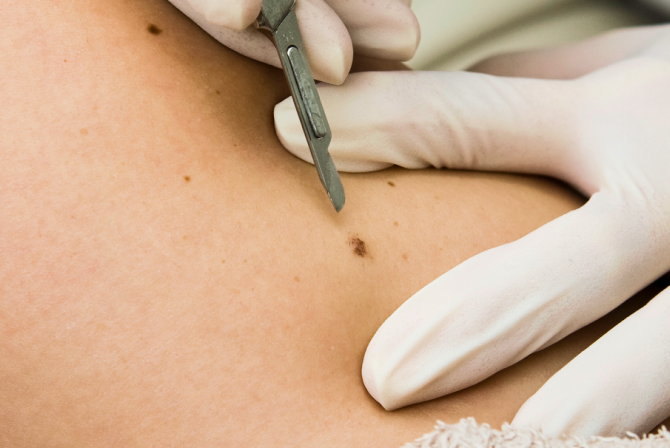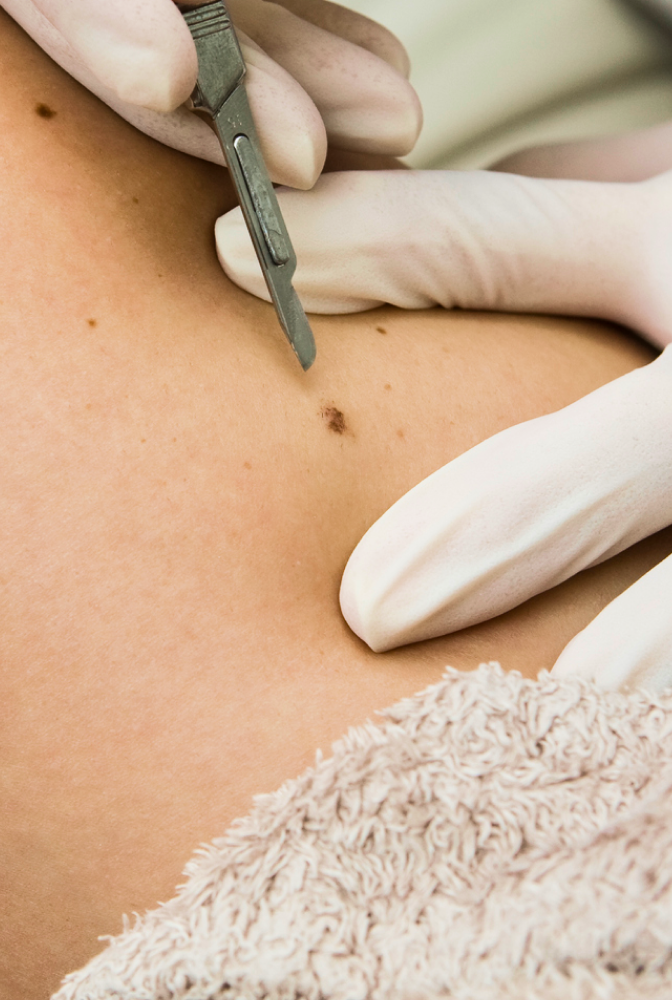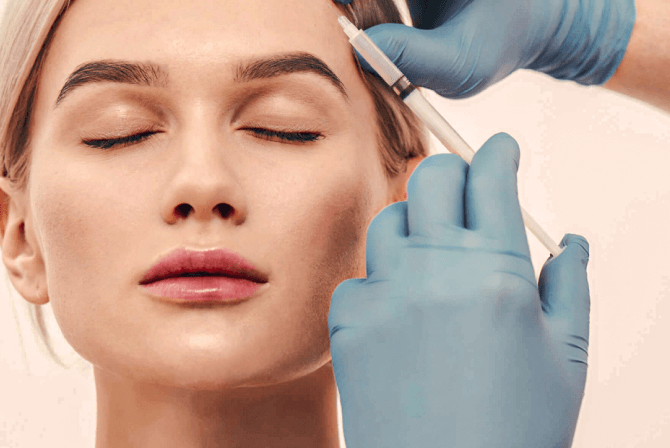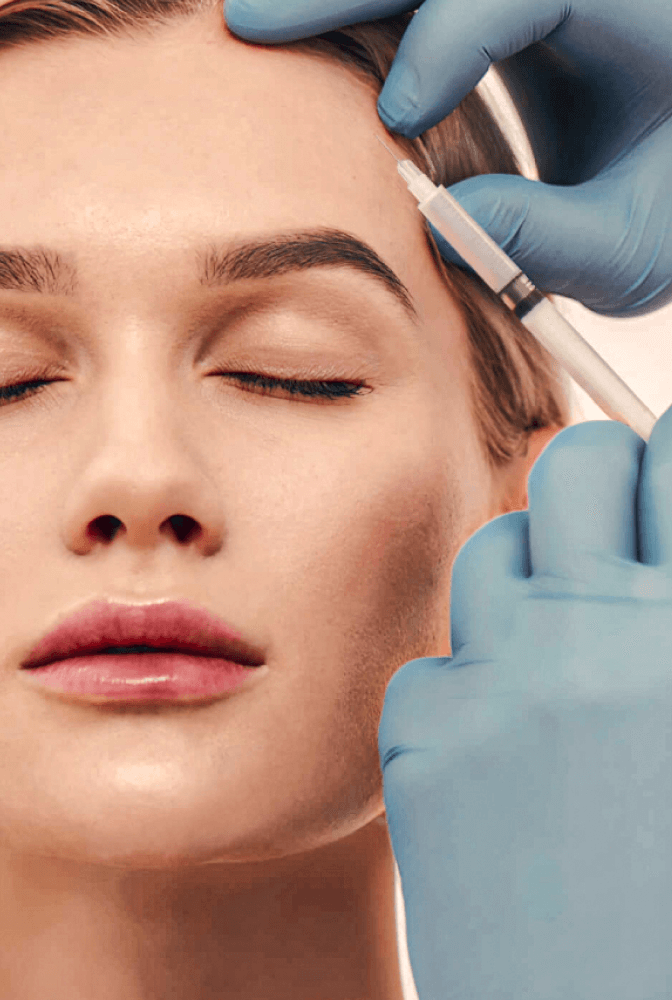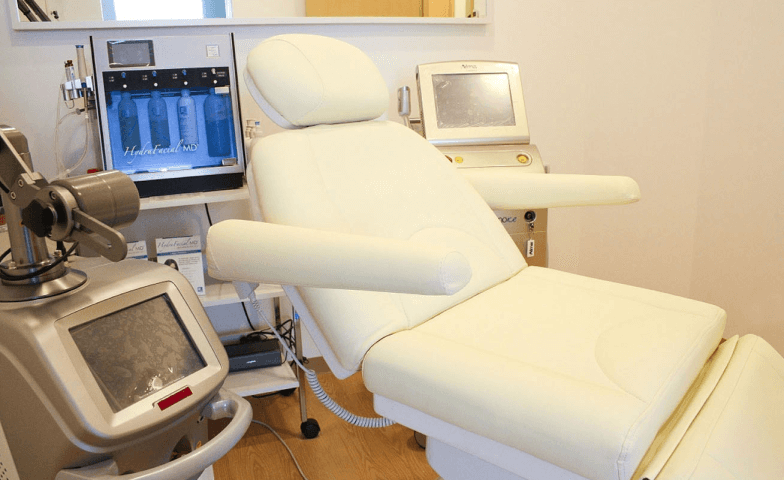Common Medical Dermatologic Conditions
-
Eczema (Dermatitis)
Eczema, or dermatitis, refers to inflammation of the skin. It is one of the commonest causes of dry, sensitive skin. When this condition flares up, it can result in an intensely itchy, red inflamed rash.
-
Urticaria (Hives)
Urticaria is an itchy rash that appears as bumpy areas on the skin. It usually lasts for a few hours before fading away. Sometimes, it may be accompanied by swelling of the eyes or lips. Urticaria is usually caused by a reaction to drugs, certain foods or a virus infection. Sometimes, recurring attacks of urticaria may be caused by sunlight, cold, pressure and sweat.
-
Acne Vulgaris
Acne is a skin condition which usually begins during the teenage years when the skin’s oil producing glands start to produce oily sebum. When the oil glands become blocked, this leads to the formation of comedones – blackheads and whiteheads. When bacteria infect these areas, the skin becomes red and inflamed, resulting in pimples.
-
Rosacea
Rosacea is facial skin condition that presents as redness on the cheeks, nose, chin or forehead. Over time, the redness tends to become more persistent, in association with skin swelling, visible tiny blood vessels and small bumps or pimples. Sometimes, the eyes are also affected and may be watery or bloodshot. In long standing and severe cases the nose may grow swollen and lumpy.
-
Skin Allergies
Contact dermatitis is a skin rash caused by skin exposure to certain substances. Irritant contact dermatitis occurs when the skin comes into contact with irritating chemical substances such as soaps, detergents, bleach or engine oils. Allergic contact dermatitis is caused by skin sensitivity to materials such as nickel, epoxy glue, rubber and fragrance/perfume.
-
Psoriasis
Psoriasis is a chronic skin disease which is caused by inflammation. It appears as thick, silvery flakes or scales on pinkish red skin, usually on the elbows, knees, back or scalp. Psoriasis also involves the nails, causing small pits to form in the nail plates, nail discolouration, thickening of the nails or lifting of the nails from the nailbed.
-
Vitiligo
Vitiligo is an autoimmune skin condition characterized by white spots and patches of skin devoid of pigment. Vitiligo most commonly occurs around the eyes, mouth, genital area, hands, feet, elbows and knees. New patches of Vitiligo may occur in areas where skin gets scratched or traumatized.
-
Viral Warts
Warts are skin growths that grow on any part of the body, including the face, fingers and groin. They have a rough surface on which tiny, dark dots can often be seen. On pressure areas like the palms or the soles, they appear flat. Warts on the sole grow inward from the pressure of standing and walking and are often painful.
-
Skin Infections
Molluscum contagiosum is a viral skin infection that appears as tiny brown bumps on any part of the body. The centre of the bump may have a depression filled with white material. This condition is more common in children. It is usually harmless, but your child may scratch or pick at the bumps, leading to bacterial infection. It is also contagious and can be transmitted to other areas of the body or to other children.
-
Scars
Keloids are raised overgrowths of scar tissue that occur when skin has been injured such as with skin trauma, surgery, vaccinations, acne or body piercings. Some people are prone to keloid formation and may develop them in several places. Treatments offered by dermatologists to flatten the appearance of keloids include injection of steroid medications into the scar tissue and cryotherapy (freezing with liquid nitrogen).
-
Hair Loss
At any time, it may be normal for a person to shed as many as 50 hairs a day. Hair loss becomes abnormal when more than 100 hairs are lost a day. There are many different kinds of hair loss which can include Androgenetic Alopecia, Alopecia Areata and Telogen Effluvium.
-
Scalp Problems
Seborrheic dermatitis is a greasy, scaly yellow rash that occurs on oily areas of the body like the scalp, face, groin, upper chest and back. It may be mildly itchy. When the scalp is affected, dandruff is seen.
-
Nail Problems
Nail infections may be caused by bacteria, fungi, yeast or virus. The commonest nail infection is fungal nail infection. Fungal nail infection can affect the finger and toe nails. The nail plate may become brittle, thickened or completely destroyed. The dermatologist will prescribe an antifungal lotion or oral antifungal tablets to treat this condition.
-
Benign Skin Tumours
Melanocytic naevi, more commonly known as moles, are benign (non-cancerous) skin growths caused by abnormal collection of pigment producing cells in the skin. Most moles are dark and pigmented but some moles may be lightly pigmented or may even be flesh coloured. Moles initially appear flat but may become raised and dome-shaped later in life.
-
Skin Cancers
There are many types of skin tumours or skin growths. Some of them are harmless and need no treatment. These are called benign tumours. Some are cancerous and must be removed early. These are called malignant tumours. Any skin growth that is progressively enlarging or changing its appearance should be assessed and examined by a dermatologist.
-
Mole and Skin Cancer Screening
Skin cancer can be life threatening and the condition should not be taken lightly. As early detection is crucial, we advise regular mole and skin cancer screening to detect any potential risks. Our consultant dermatologist will take a complete history and perform a thorough mole screening, and discuss with you in depth on skin cancer surveillance.
